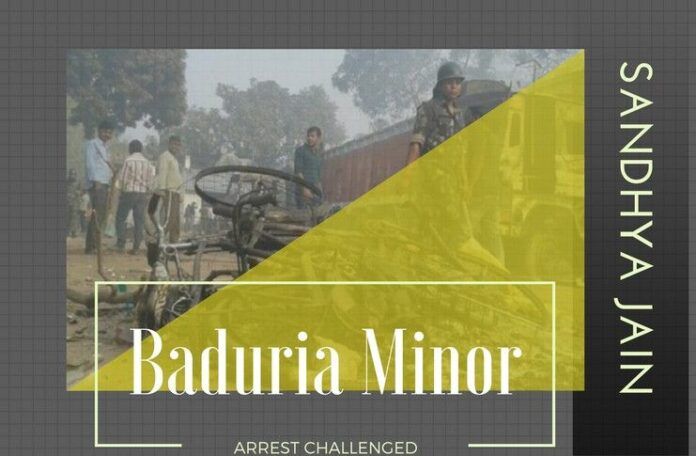
Even as social media expressed anguish and anger against the arrest and detention of the minor boy whose Facebook post sparked off serious communal unrest in Basirhat town of North 24 Parganas district from July 4, the Hindu Samhati, a grassroots human rights body that provides succour to West Bengal’s beleaguered Hindu community during every incident of rape, molestation, land grab or temple desecration, has stepped in to challenge the arrest. The organization is particularly unhappy at the manner in which the Juvenile Justice (Care and Protection of Children) Act has been deliberately ignored in this case when it has evidence that the boy is only 16 years old (he turned 17 on Jul 18th).
Had safety been the primary concern of the authorities, the boy and his family should have been moved to a safe place. Instead, the police produced him before a magistrate who sent him to judicial custody. Surely the magistrate knew this was not the legal process when dealing with a minor?
Most Indians were outraged at the duplicity with which the mainstream media collaborated in concealing the name and identity of the minor rapist-assailant in the sensational Delhi gang rape of December 2012. The convict was released after merely three months in jail and relocated and rehabilitated in another part of the country through the aegis of an NGO. The public outrage forced the government to amend the law to provide that anybody committing a heinous crime would be tried as an adult.
The 16-year-old from Rudrapur village in Baduria in Basirhat, however, had merely posted a comment or sketch repeating some ahistorical imaginations about the Kaaba, which were quickly deleted when they came to the notice of the authorities. Despite this, the youth – a student of class XI – was quickly arrested on the night of July 2, ostensibly for his own safety. A mob burnt down his house the same day, and the rioting built up thereafter.
In the midst of this high tension, some wise persons thought it fit to release the name of the minor; some photographs also did the rounds of social media. This enraged right minded citizens who countered by revealing the name of the now-adult convicted rapist, along with his alleged photograph (the veracity of which could not be ascertained).
Had safety been the primary concern of the authorities, the boy and his family should have been moved to a safe place. Instead, the police produced him before a magistrate who sent him to judicial custody. Surely the magistrate knew this was not the legal process when dealing with a minor?
Nor did West Bengal Police enhance security in the area, which was soon engulfed in fierce rioting by irate mobs that set fire to everything that came their way. They had clearly been deployed to wreak mayhem on the town. It took a couple of days, including an intervention from Governor Kesrinath Tripathi, to bring the situation under control. Before that, however, an agitated Chief Minister accused the Governor of interfering in the administration and further accused Hindu Samhati chief, Tapan Ghosh, of fanning the unrest.
It has been alleged that a crackdown on illegal cattle smuggling to Bangladesh, just a few miles across a fairly porous border, was the real reason for the rage of the rampaging mobs. This lucrative trade fetches Rs 4000 crore per annum, half of which goes into the pockets of the North 24 Parganas traders; the rest goes to Malda-Murshidabad traders. This situation is reminiscent of the so-called farmer’s agitation in Mandsaur, Madhya Pradesh, where opium farmers who wanted to sell more of their lucrative produce to private buyers (read drug mafia) fuelled the violence there early this month.
It goes without saying that Delhi’s Page Three activists kept the minor boy and the Basirhat victims at arm’s length. It was left to the volunteers of the Hindu Samhati to look out for the family of daily-wage laborers.
Moving systematically, Hindu Samhati volunteers scoured the burnt remains of the house for days. Their tenacity was rewarded when they finally found his birth certificate which clearly states that he was born on 6 July 2000. This proves he was only 16 years old at the time of arrest. Tapan Ghosh subsequently tweeted that he had legal evidence that the boy was a minor. The birth certificate has been issued by Baduria Municipality.
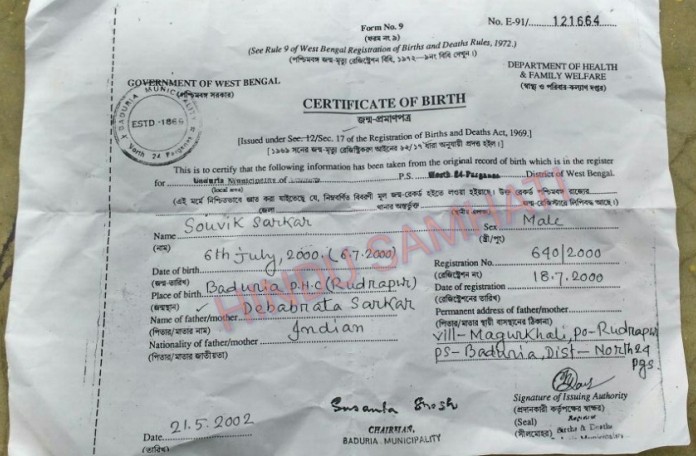

Hindu Samhati found the document on July 12. At the urging of the boy’s uncle, it filed complaints with Chief Minister Mamata Banerjee and the West Bengal Commission for Protection of Child Rights, on July 12 itself, regarding the violation of child rights by the West Bengal police. In a pleasant surprise, the Chief Minister office acknowledged the complaint and even issued a receipt for the same.
There is considerable apprehension among the battered Hindu community of the area that since the first information report (FIR) filed by the police does not mention the boy’s date of birth, the administration may attempt to have him tried as an adult, is in gross violation of the Juvenile Justice (Care and Protection of Children) Act.
It is learnt that the police would be producing the child in court on July 20. Hindu Samhati plans to have its lawyers present to argue that juvenile law needs to be applied in this case, failing which the organization will appeal to the High Court.
- Plagiarism with Pride - November 10, 2018
- “Hindu-ness is the essence of India” – RSS Sarsanghachalak - September 20, 2018
- Lacunas persist in Kathua story - May 5, 2018

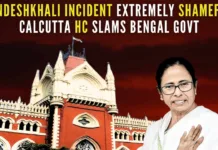
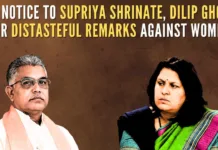
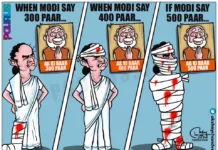







Hindus are to blame themselves only for the state of affairs in Bengal today. They are lenient. But are never united among themselves, have no fellow-feelings, and most shockingly, they don’t bother to learn from their past mistakes. Most of them have a peculiar chant for not voting on the Polling day, rather enjoy the paid holiday. In an all India scenerio, more than 30% of Hindus don’t bother to understand the importance of voting at all and if I am not wrong, it is around 40% in Bengal. And believe me, this is exactly the reason for their woes and why most of the so called ‘secular’ political parties/media houses don’t care to count them seriously and so peach for appeasement of the other side which votes en masse. So who are to blame? We are to nip in the bud the reasons for nasty incidents like Basirhat to occur.
Sad, but true
This is the height of “secularism”, mostly anti-Hindu and meant to encourage a medieval and fanatical mindset. After all, many Hindu temples have been desecrated and vandalised in West Bengal alone in recent times, leave alone those during the days of Islamic invasions/rule. But that was never a cause of concern and never considered damaging for communal relations in W Bengal and rest of India. But some facebook post by a minor boy on a theme of some historical debate was considered enough for the powerful jihadis to go on an anti-Hindu rampage. And mind you, this happens in West Bengal which was created to save the Hindus of Bengal after millions of them were “thrown to the wolves” in Pakistan. By the way,what was the role of W Bengal’s TMC government-abetting ?encouraging ? provoking ? or just callouseness when Kafirs suffer ??
Yes, the entire gang of anti-Hindu and pro-Muslim gang openly supported a Muslim rapist of a Hindu girl on the ground he was a minor and saw to it that he was taken care of and treated most honourably.
the shitty thing is the no of shares the post got to make it viral and provoke communal riots… it was the communal enviroment that darkened the boys mind to make such a post… and it was communal minds that shared the post to make it viral… so in other words the communal hate already existed and the riots were bound to happen anyway… the boys post only acted as a pin to an expanding baloon . the Govt is to blame and at this point it will do anything and everything to shift the blame to someone/something else hence .. they expect us to believe that all this chaos is solely cause of a single facebook post… haha cmon give me a break!!!
Looks like we are living in a insecure society where the Islamist jihadis can do any atrocity on Hindus and there is no one to question it. It is increasingly clear that we have a Central Government who does not have the guts even to act against an unarmed mafia type fanatics who had been terrorizing Hindus in West Bengal. It looks like we do not have a Government or law and order. All rules seem to apply only to us Hindus, and Muslims are above the law.
The best news I heard so far.